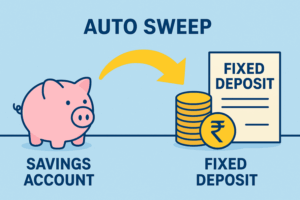
The government of India introduced four labor codes on wages, social security, industrial relations and occupation safety, health, and working conditions in line with the changing labor market trends. For obvious reasons, the code on wages has attracted the attention of employers and employees the most. The New Wage Code 2021 is expected to reduce take-home pay and increase retirement savings across industries. The new code, which unifies and updates current labour regulations, modifies the definition of “wages,” which has an impact on how pay, benefits, and allowances are determined. The increased percentage of basic pay, which must now make up at least 50% of an employee’s total compensation, is one of the most noticeable modifications.
Consequently, elements such as gratuity and provident fund contributions are probably going to go up, which might mean a drop in take-home pay. The New Wage Code 2021 might impact your in-hand salary and discretionary income, though its main goals are to give workers improved social security benefits and long-term financial stability. Employees must comprehend these developments to efficiently manage their funds in this constantly changing regulatory environment.
What is the New Wage Code?
As of July 2022, the new pay law is in effect and will be implemented, impacting employee contributions to the provident fund, working hours, and employee compensation. At least 13 Indian states have published draft rules of the new pay law 2022, according to an official report. The new wage code was notified on August 8, 2019, by the Centre, which finished the process of revising the draft regulations of the new code and the other labour laws in February 2021.
Along with the other labour rules, the Central government has appealed to state government to apply the new wage code bill 2021. Because it is connected to the other codes in the system, this needs to happen simultaneously. As a result, there will be significant adjustments to the private employee pay structure in 2022, the main one being a decrease in take-home pay and an increase in provident fund contributions. The pay, gratuity, and provident fund of central government employees would all be directly impacted by the proposed regulations.
What is changing for you under the New Wage Code?
As a component of the labour reforms implemented by the Indian government, the New Wage Code attempts to simplify and optimize the current labour laws by grouping them into four codes: Wage structures, industrial relations, social security, workplace safety and health, and working conditions. Some of the elements of your benefits and pay that are influenced by this new code include the following. Here’s a deeper look at how basic pay, provident fund, and gratuity will be impacted by the New Wage Code 2021.
Basic Pay
The definition of wages is one of the key adjustments made by the New Wage Code. The new code requires that basic pay make up at least 50% of the gross salary, reducing the take-home pay of employees, but increasing PF contributions from the employees and the employer . In the past, many businesses used allowances to lower the base pay amount and minimize required payments to provident fund and gratuity. However, companies will no longer be able to reduce base salaries as the new code mandates that basic pay be at least half of total cost to the company. The take-home pay of many employees is anticipated to decrease as a result of this adjustment since statutory payments will now account for a bigger percentage of their compensation.
Provident Fund
Basic Pay and provident fund (PF) contributions are closely related. The revised definition of salaries will result in a rise in Basic Pay, which will increase company and employee payments to the Provident Fund. This entails a larger payment from your company to PF as well as a larger deduction from your pay. Your net take-home pay will decrease as a result, even as your retirement savings will rise. Although the long-term financial stability of the employees is enhanced by this shift, there will be an immediate reduction in monthly income.
Gratuity
The new wage code bill 2021 also has an impact on gratuity, which are one-time payments made to employees upon retirement or resignation, provided they have completed five years of continuous service in an organization. Given that gratuity is determined by basic pay, a greater basic pay component translates to a higher gratuity. Furthermore, the new rule suggests simplifying the qualifying process for employees to receive gratuity by lowering the continuous service requirement from five years to three years for fixed-term workers.
The rise in gratuity that employees will get upon leaving the firm is a benefit of this reform, but companies may be worried about increasing costs. Workers should take advantage of the increased savings for a more secure financial future and be ready for changes in their pay structure.
How will the new wage code impact your take-home pay after-tax?
Employees cherish their take-home pay as that is how much they can afford to spend. In other words, the amount serves as the employee’s monthly budget and any reduction here will require them to make adjustments to monthly spending. Nevertheless, in the long term, it will be advantageous. The higher monthly outgo for provident fund is intended to enhance social security for employees.
As discussed above, the base pay must equal at least 50% of the CTC under the soon-to-be-implemented new wage code legislation. The taxes are anticipated to rise since your base pay is taxable income. Companies must adapt to the new pay regulations. For workers in the medium and low pay bands, this means that basic pay and taxes will increase under the new labour rules. Under the basic salary rule, employees should get lower take-home pay due to a rise in PF and taxes. If your wage falls into the lower category, there is less chance that the deductions will grow.
The overall employee benefits will change as a result of the revised definition of earnings and the fact that social security components like the provident fund are now guaranteed as a proportion of “wages.”
Why is the government implementing this?
Currently, the Indian government has embarked on implementing the New Wage Code 2021 as part of the broader process of reviewing and improving the working environment for employees. A majority of India’s current set of labour regulations were framed soon after India attained independence and hence badly in need of reform.
The guarantee of basic labour rights such as social security, wages and proper working conditions, especially in the unorganized sectors becomes a challenge. The combined code now comprises four new labour laws: the Payment of Wages Act, the Minimum Wages Act, the Payment of Bonus Act, and the Equal Remuneration Act. The new reform aims to make employees and employers understand their rights better.
Addressing pay disparities and implementing just and equitable compensation across industries is another important consideration for launching the new salary structure 2021. The government wants to ensure that all workers are fairly compensated for their labour and to prevent exploitation by establishing a national minimum wage and standardizing pay calculations. The law also seeks to improve working conditions and social security coverage, which will support stability and growth in the economy as a whole.
Things to look out for in your salary break-up after the new wage code
The implementation of the New Wage Code in India has led to notable alterations to wage structures, impacting take-home pay, retirement benefits, and tax outgo. After the implementation of the wage code bill 2021, look out for the following changes in your pay slip.
Impact on Provident Fund (PF)
The percentage of basic pay that goes towards the provident fund is pre-determined. This contribution used to be 12% of the basic pay. The employee’s basic pay, which is currently between 30 and 40% of their gross income, will need to increase to at least 50% of the cost to the firm under the new regulations. Thus, there will be a larger contribution to the provident fund every month.
Impact on allowances
Allowances will be cut since we now know that the base wage, as per the New Wage Code, cannot be less than 50% of the CTC that an employee receives. Currently, 40% of the gross salary is the employee’s basic pay. Currently, various allowances are an essential component of the employees’ compensation structures that account for a sizeable amount of the overall pay.
Gratuity
The basic pay of employees is also used to calculate gratuity. As the basic pay rises, gratuity payout will also increase. Currently, an employee who leaves the firm after working for at least five years receives a gratuity sum. The new code plans to bring fixed-term employees also under the gratuity cover no matter the duration of employment. The employee is entitled to the gratuity amount under the new wage code 2021 even if they have worked for the same company for less than five years.
Impact on taxes
Under the new regulations, the taxable portion of an employee’s CTC, known as the Basic Salary, would rise to 50%. A large increase in the base wage means that taxes will inevitably rise as well. The taxable portion of HRA will likewise increase under the new regulations.
Conclusion
Redefining compensation components, increasing basic pay, and reducing allowances are some ways India’s New Wage Code 2021 impacts employee take-home pay. Higher provident fund payments result from this adjustment, which may lower net pay, but increase long-term savings. Payroll arrangements must be modified by employers to conform to the updated definitions of wages, which may have an impact on additional perks like bonuses and gratuities.
Long-term financial stability is fostered by enhanced retirement benefits, even though the temporary loss in take-home income may make it difficult for employees intially. To conclude the New Wage Code seeks to provide a more equitable framework that balances income with long-term financial security.







